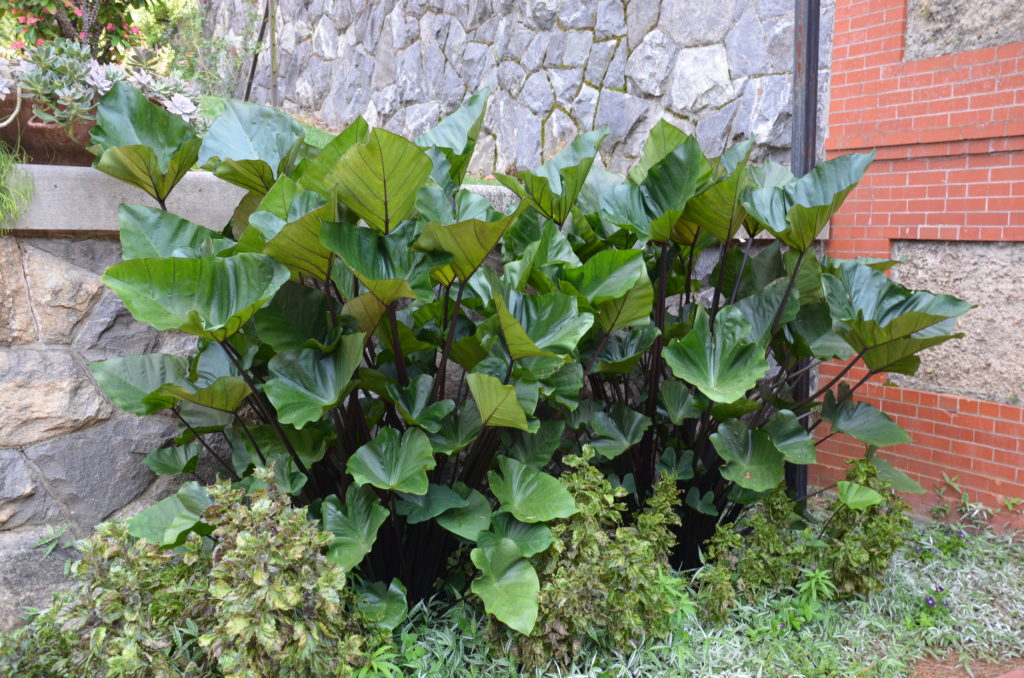Elephant ears (Colocasia esculenta) and their aroid cousins have become commonplace in not only hot, humid southern gardens, as well in temperate landscapes. Gardeners grow them in large containers and overwinter them indoors in a non-freezing environ. Also, my neighbors in zone 6 blanket in-ground plantings with several inches of loosely packed leaves overwinter.
Colocasia ‘Coffee Cups’ develops into a stunning 3 to 6 foot tall clump glossy olive green foliage with jet black stems. Leaves fold and form into a cup-shape. As the leaf fills with water, the stem gives enough for the leaf to dump out its catch before refilling… totally fascinating. Elephant ears thrive in an organically-rich garden soil or in large containers or urns.

A similar variety, Colocasia ‘Teacups’ struts prominent purple veined underside. Leaves are especially colorful in sun. Stems are strong and leaves are cupped to allow rainwater to collect in the cup! When it fills full, the stems bend just enough to pour out the water. This action is repeated — the leaf refills. Leaves are purple veined on their underside, especially colorful in the sun.
Both “action” varieties grow vigorously over the season, 3 to 6 feet high, growth rate depending on quality of the soil, irrigation frequency, and feeding rate. It grows best in full to partial sunlight (6 hours minimum) and thrive in moist soils.
In northern areas clumps are dug up and stored in a home garage with 40°F minimum temperature. In late winter or early spring clumps may be divided and repotted for the move outdoors once all danger of frost has passed.
Generally, elephant ears are free of disease and pest problems; occasionally aphids, whiteflies, spider mites, stem and root rots require attention.
Generally, elephant ears require low maintenance other than frequent irrigation during dry weather periods. Feed with a water soluble fertilizer such as Miracle-Gro™ and Jack’s™ and organic Espoma™ Plant Food. Halt feeding plants in late August.

 Posted in
Posted in 
